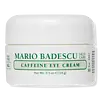What's inside
What's inside
 Key Ingredients
Key Ingredients

 Benefits
Benefits

 Concerns
Concerns

 Ingredients Side-by-side
Ingredients Side-by-side

Water
Skin ConditioningOlus Oil
EmollientArachis Hypogaea Oil
Skin ConditioningParaffinum Liquidum
EmollientPetrolatum
EmollientCetyl Esters
EmollientTocopheryl Acetate
AntioxidantZea Mays Oil
EmulsifyingCera Alba
EmollientCetearyl Alcohol
EmollientGlycerin
HumectantSodium Borate
BufferingCeteareth-20
CleansingChamomilla Recutita Flower Extract
MaskingTocopherol
AntioxidantPropylene Glycol
HumectantTheobroma Cacao Seed Butter
EmollientDiazolidinyl Urea
PreservativeSodium Benzoate
MaskingTriethanolamine
BufferingMethylparaben
PreservativeRetinyl Palmitate
Skin ConditioningPropylparaben
PreservativeHydrogenated Starch Hydrolysate
HumectantSodium Chloride
MaskingCaramel
Cosmetic ColorantCI 42090
Cosmetic ColorantCI 16035
Cosmetic ColorantCI 19140
Cosmetic ColorantCI 15985
Cosmetic ColorantWater, Olus Oil, Arachis Hypogaea Oil, Paraffinum Liquidum, Petrolatum, Cetyl Esters, Tocopheryl Acetate, Zea Mays Oil, Cera Alba, Cetearyl Alcohol, Glycerin, Sodium Borate, Ceteareth-20, Chamomilla Recutita Flower Extract, Tocopherol, Propylene Glycol, Theobroma Cacao Seed Butter, Diazolidinyl Urea, Sodium Benzoate, Triethanolamine, Methylparaben, Retinyl Palmitate, Propylparaben, Hydrogenated Starch Hydrolysate, Sodium Chloride, Caramel, CI 42090, CI 16035, CI 19140, CI 15985
Water
Skin ConditioningIsododecane
EmollientPentylene Glycol
Skin ConditioningCetearyl Olivate
Sorbitan Olivate
EmulsifyingAmmonium Acryloyldimethyltaurate/Vp Copolymer
Caprylic/Capric Triglyceride
MaskingSqualane
EmollientGlycerin
HumectantCaffeine
Skin ConditioningMaltodextrin
AbsorbentOleic Acid
EmollientPhenoxyethanol
PreservativeSodium Acrylates Crosspolymer-2
AbsorbentHydrolyzed Sodium Hyaluronate
Skin ConditioningChlorphenesin
AntimicrobialTerminalia Arjuna Extract
Skin ConditioningCaprylyl Glycol
EmollientBHT
AntioxidantCetearyl Alcohol
EmollientXanthan Gum
EmulsifyingHydroxyethylcellulose
Emulsion StabilisingCellulose
AbsorbentLecithin
EmollientSilica
AbrasiveCI 77120
Cosmetic ColorantSodium Hyaluronate
HumectantJojoba Esters
EmollientMica
Cosmetic ColorantCI 77891
Cosmetic ColorantWater, Isododecane, Pentylene Glycol, Cetearyl Olivate, Sorbitan Olivate, Ammonium Acryloyldimethyltaurate/Vp Copolymer, Caprylic/Capric Triglyceride, Squalane, Glycerin, Caffeine, Maltodextrin, Oleic Acid, Phenoxyethanol, Sodium Acrylates Crosspolymer-2, Hydrolyzed Sodium Hyaluronate, Chlorphenesin, Terminalia Arjuna Extract, Caprylyl Glycol, BHT, Cetearyl Alcohol, Xanthan Gum, Hydroxyethylcellulose, Cellulose, Lecithin, Silica, CI 77120, Sodium Hyaluronate, Jojoba Esters, Mica, CI 77891
Ingredients Explained
These ingredients are found in both products.
Ingredients higher up in an ingredient list are typically present in a larger amount.
Cetearyl alcohol is a mixture of two fatty alcohols: cetyl alcohol and stearyl alcohol. It is mainly used as an emulsifier. Emulsifiers help prevent the separation of oils and products. Due to its composition, it can also be used to thicken a product or help create foam.
Cetearyl alcohol is an emollient. Emollients help soothe and hydrate the skin by trapping moisture.
Studies show Cetearyl alcohol is non-toxic and non-irritating. The FDA allows products labeled "alcohol-free" to have fatty alcohols.
This ingredient is usually derived from plant oils such as palm, vegetable, or coconut oils. There is debate on whether this ingredient will cause acne.
Due to the fatty acid base, this ingredient may not be Malassezia folliculitis safe.
Learn more about Cetearyl AlcoholGlycerin is already naturally found in your skin. It helps moisturize and protect your skin.
A study from 2016 found glycerin to be more effective as a humectant than AHAs and hyaluronic acid.
As a humectant, it helps the skin stay hydrated by pulling moisture to your skin. The low molecular weight of glycerin allows it to pull moisture into the deeper layers of your skin.
Hydrated skin improves your skin barrier; Your skin barrier helps protect against irritants and bacteria.
Glycerin has also been found to have antimicrobial and antiviral properties. Due to these properties, glycerin is often used in wound and burn treatments.
In cosmetics, glycerin is usually derived from plants such as soybean or palm. However, it can also be sourced from animals, such as tallow or animal fat.
This ingredient is organic, colorless, odorless, and non-toxic.
Glycerin is the name for this ingredient in American English. British English uses Glycerol/Glycerine.
Learn more about GlycerinWater. It's the most common cosmetic ingredient of all. You'll usually see it at the top of ingredient lists, meaning that it makes up the largest part of the product.
So why is it so popular? Water most often acts as a solvent - this means that it helps dissolve other ingredients into the formulation.
You'll also recognize water as that liquid we all need to stay alive. If you see this, drink a glass of water. Stay hydrated!
Learn more about Water